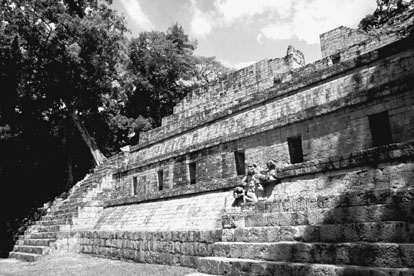

 | Page 670 |  |
and management. In 1979, IHAH created the Proyecto Arqueológico Sula (PAS), with Honduran and North American investigators working to assemble a site inventory for the lower Ulua River where the residential and industrial growth of San Pedro Sula had placed archaeological resources at risk. The lower Ulua Valley had been known since at least the 1890s as a center of substantial archaeological remains, and the immediate precedent for PAS was a series of salvage excavations of Travesía, a major center destroyed in 1975. In association with PAS, IHAH founded a regional center for archaeology on the north coast in the town of La Lima.

Mayan ruins at Copán
(Corel)
In the same year, IHAH organized the Proyecto Arqueológico El Cajón (PAEC), the first cultural resources management initiative in Honduras. PAEC was funded as part of an internationally financed hydroelectric project, and it represented a subtle, but significant, shift in IHAH activity. Although PAEC was dedicated, like pas, to the salvage of sites doomed by economic development, the area covered by PAEC had no previously known archaeological remains. The requirement for a survey, rather than resting on the destruction of already known sites, was predicated on the need to establish what kinds of cultural resources would be destroyed and to mitigate that destruction.
IHAH has been limited in its ability to initiate research both by low funding and by the still-small number of trained archaeologists in the country. Since 1979, much of its resources has gone to the supervision of projects proposed by researchers from other countries. IHAH has used its influence to encourage the extension of research to areas that either were previously little studied or had never received archaeological attention. The internationally funded work authorized by IHAH in the 1980s and early 1990s has included projects in the hinterlands between Copán and the lower Ulua Valley, survey and excavation in the Comayagua Valley, and research east of the Ulua-Comayagua corridor reaching as far as the Mosquito area on the Nicaraguan border. IHAH has recruited collaborators for projects aimed at both the very earliest stages of occupation and the post-Columbian period, both largely ignored by previous researchers. Most important, through the permit process
 |  |